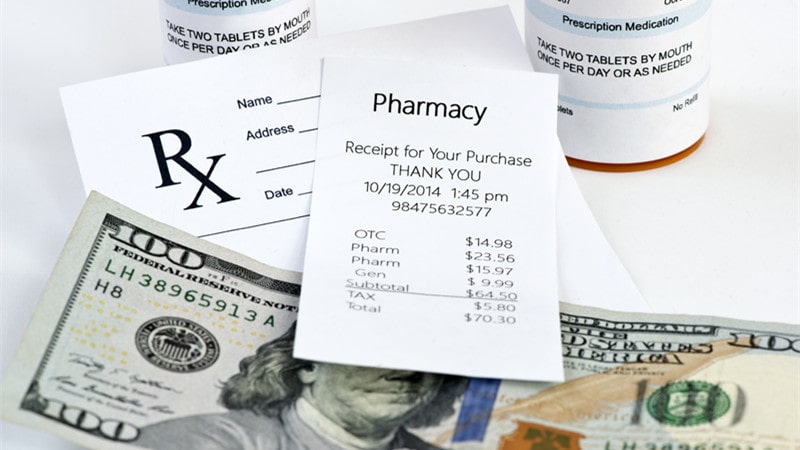When a person’s total prescription drug spending exceeds a predetermined threshold, a gap in their Medicare Part D coverage occurs, known as a “coverage gap” or “donut hole.” Beneficiaries are responsible for paying all drug expenses during this period and are not eligible for further Medicare help. The donut hole can be challenging and expensive for many health insurance recipients who have to pay out of pocket. Fortunately, there are several strategies that can be employed to reduce or prevent donut holes altogether. Here are some ideas:
1. Buy a generic prescription
Buying generic prescription drugs is one of the easiest ways to stay out of the Medicare Part D donut hole. Prescriptions for generic drugs are usually much cheaper than brand-name drugs and are just as effective. A person may avoid falling into the “donut hole” due to substantial savings. However, it’s important to remember that generics may not cover all medications. Also, certain Part D plans may not pay for generic equivalents of drugs. Therefore, it is important to consult with the program before purchasing a generic drug.
2. Advance access to mail-order pharmacies
Using mail-order pharmacies and pre-ordering medication orders is another strategy for getting around the Medicare Part D donut hole. Drug prices can be kept down by mail-order pharmacies, which often charge less than retail pharmacies.
Plus, getting a prescription early helps spread the cost over a longer period of time, keeping a person out of the donut hole. However, it must be remembered that mail-order pharmacies may only be available in certain areas, and prescriptions may take longer.
3. Ask drug manufacturers for discounts
Asking drug manufacturers for discounts is another way to get around the Medicare Part D donut hole. Many pharmaceutical companies offer discounts on various drugs to Medicare beneficiaries.
Although values vary by manufacturer, they can significantly reduce drug prices. However, it’s important to remember that not all prescriptions are eligible for the discount. These values may only be available at specific pharmacies or with specific drugs. To find out if there are any discounts, it is essential to check with the pharmacy and the drug manufacturer.
Also, Medicare recipients should always ask their doctor if there are any other deals or coupons available. You can use discounts some doctors may give you to help lower your prescription drug costs. Medicare recipients can also ask if a pharmacy near them offers deals or coupons for their medications.
4. Shop around for new prescription drug plans
Medicare recipients need to compare different prescription drug plans. It is crucial to compare plans to choose the one that best suits individual needs, as different plans may provide different levels of coverage for other prescriptions. Additionally, some programs may offer savings or additional incentives to help keep drug prices down. Browsing around might take some time, but it might be worth it if it helps you escape the donut hole.
5. Talk to your doctor
It is vital to discuss your prescription with your doctor. Your doctor can refer you to generic alternatives or other ways to lower your prescription costs. Your doctor can also guide you on how to manage your medications effectively to avoid or reduce donut holes. For example, to make the pill last longer, your doctor may recommend taking smaller doses of the drug or splitting the doses. Discussing your prescriptions with your doctor is an excellent strategy for getting the most out of your Medicare coverage and avoiding the donut hole.
6. Monitor your spending
It’s also important to keep an eye on your finances. You can identify when you’re approaching a donut hole and take steps to avoid it by tracking your drug prices. Medicare recipients can determine their prescription drug costs by checking their Explanation of Benefits (EOB) statement. Through Medicare Plan Finder, they can also determine expected annual out-of-pocket costs. You can avoid the donut hole by watching your spending and using that information to help you choose your medication.
7. Take advantage of a health insurance plan
Take advantage of any Medicare plans or supports that may be available. This is very critical. Medicare beneficiaries can save money on prescription drugs through a variety of plans. They include the Medicare Extra Assistance Program (to help pay for prescription drug costs), the Low Income Subsidy Program (to help with premiums, deductibles and co-pays), and the Medicare Savings Program (to help cover some of the costs for low-income users).
The Medicare Open Enrollment Period enables beneficiaries to change plans or coverage, and a Medicare Advantage plan is a plan from which Medicare beneficiaries can benefit. By taking advantage of these initiatives and lowering prescription costs, the donut hole can be avoided.
in conclusion
Medicare Part D Donut Hole can be a difficult and costly time for many Medicare beneficiaries. Fortunately, there are a few strategies you can use to help avoid or minimize donut holes. These include buying generic drugs, using mail-order pharmacies and ordering drugs ahead of time, applying for discounts from drug manufacturers, shopping around for new prescription drug plans, talking to your doctor about your drugs, monitoring your spending, and taking advantage of Medicare plans or assistance. Implementing these strategies can help Medicare beneficiaries save money and avoid donut holes.
